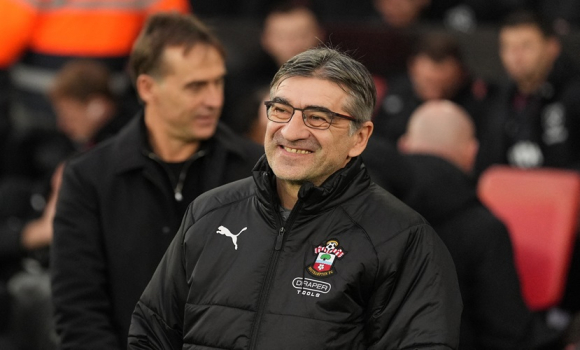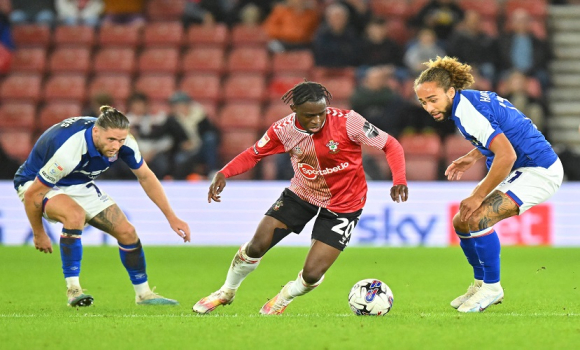
Ipswich’s victory sparked hope that Ivan Juric was steering his team forward, but the aftermath has hinted at underlying tensions in the squad.
This weekend marks two months since Russell Martin was sacked, but have we really made any progress since then?
Since that decisive defeat to Tottenham Hotspur, which sealed Martin’s fate, Southampton have played eight Premier League games. The first, a draw at Fulham, offered a glimmer of hope, with Ivan Juric watching on as he awaited his work permit. It seemed like a chance for a fresh start, moving away from Martin’s rigid possession-based tactics and launching a fight for survival.

However, what followed was a chaotic run of six games before the Ipswich win, filled with inconsistency and confusion. Team selections were puzzling, substitutions questionable, and performances erratic—even within the same match. At Manchester United, Southampton dominated for 80 minutes before self-destructing due to baffling changes. Days later at Nottingham Forest, the reverse happened—a disastrous starting XI crumbled in the first half, only for substitutes to nearly salvage a result. Newcastle was another disaster, with the team looking lost for much of the game.

Even the Ipswich victory masked deeper issues. The starting lineup raised eyebrows, and for 87 minutes, Southampton looked disjointed and leaderless. A late goal from Tall Paul turned the result around, but the overall performance suggested little progress. Still, it ended a miserable six-game losing streak under Juric.

By this point, any lingering hopes of survival had faded. Had Southampton held on at Old Trafford and taken a point at Forest, there might have been an outside chance. Instead, the reality is bleak—relegation is now all but certain.
Fans initially consoled themselves with the belief that, even if the club went down, the squad had a strong foundation for an immediate promotion push. Adam Armstrong had struggled in the Premier League but thrived in the Championship. Flynn Downes, though not the fastest at this level, would be a key player in the second tier. Yet after the January transfer window, that belief crumbled. Instead of fine-tuning the squad, Juric appeared intent on tearing it apart.
Optimism about summer spending was also misplaced. Reports emerged that Downes was desperate to leave, clashing with Juric in the process. Armstrong, now at West Brom, was also eager to move on—a huge concern given he was arguably the best striker at this level. Promising young talents like Sam Amo-Ameyaw were quickly offloaded, seemingly prioritized as financial assets rather than future stars.

Juric’s approach to squad management has raised even more concerns. Senior players have been sidelined, while inconsistent figures like Sulemana and Onuachu continue to get chances. The Burnley game highlighted this divide—Juric fielded Bree, Sulemana, Manning, and Onuachu while leaving experienced names like Lallana, Fraser, Taylor, and Downes either benched or completely out of the squad. The defensive setup was equally baffling—only one natural center-back started, with four full-backs and even Joe Aribo filling in at times.
It was a tactical disaster, but the warning signs have been there for weeks. Southampton’s squad now seems fractured, with key players wanting out and those who remain struggling to find consistency. Juric’s managerial history suggests little flexibility—when things don’t go his way, trouble follows. His tenure at Torino was an anomaly in an otherwise short-lived series of jobs, including just 12 games at Roma.

So, are Southampton actually moving forward? Martin had to go—his possession-based tactics were holding the team back. The hope was that a new manager would bring organization, leadership, and a system that played to the squad’s strengths. Instead, the numbers show little improvement. Martin averaged 0.31 points per game; Juric, even with the Ipswich win, stands at just 0.42.
Rather than refining the squad, Juric has left it weaker and more divided. The January window saw key departures, while some players now find themselves in limbo, unable to even make the bench. Southampton have lost their identity, with a manager seemingly betting everything on Tall Paul and Sulemana while the rest of the squad watches on.

Off the pitch, leadership is equally lacking. The arrival of Johannes Spors hasn’t brought clarity—he reports to CEO Phil Parsons, who has remained largely absent, and works alongside Mark Bitcon, whose role was quietly changed to Director of Football Operations. The club appears to be shuffling responsibilities rather than making decisive decisions.
With uncertainty at board level and growing unrest within the squad, the situation at Southampton looks grim. The club had a squad capable of mounting a strong Championship promotion push, with experienced names like Armstrong, Downes, Fraser, Bednarek, and Lallana, alongside young talents such as Amo-Ameyaw, Edozie, Archer, and Charles. Yet now, many of these players could be gone by summer.

Where does that leave Southampton? Right now, progress under Juric looks doubtful. Of course, changes were necessary, but tearing a squad apart rarely leads to success. The best managers evolve teams, not rebuild from scratch.
Unless something changes, Southampton could be heading for a rocky transition—not a quick return to the Premier League. I hope I’m wrong, but based on Juric’s track record and what we’ve seen so far, the signs aren’t promising.
Leave a Reply